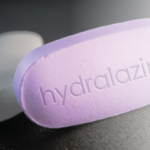He offered some observations and tips for managing patients who present with fibrosing lung diseases that could be related to connective tissue diseases. First, he said, the question is always whether a manifestation in the lung is autoimmune related. “As a pulmonologist, we used to just give everybody steroids, so it didn’t really matter,” he said. “But now we know if you have a fibrosing lung disease for no good reason and we call it ‘idiopathic,’ we do more harm than good with immunosuppressive therapy. But if it’s an autoimmune disease, we can significantly change the natural history of the disease. So that’s the world I live in, trying to figure [it] out.”
Systemic diseases most often presenting with interstitial lung disease (ILD) include scleroderma and RA, but mixed connective tissue disease and polymyositis with antisynethase syndrome are also associated.
“Virtually none” of the patients who come to see him with respiratory problems and turn out to have an autoimmune disease complain of a lot of joint pain, though they sometimes have weakness of the joints. And routine labs for anti-nuclear antibodies, rheumatoid factor and sedimentation rate often prove inadequate for diagnosis, Dr. Noble said. “In my experience, I often find an underlying autoimmune disease when these three things are negative,” he said.
Because “it’s all about pattern recognition” when identifying lung diseases, it’s important to get a high-resolution CT. “High resolution is not what your patient gets when they go to the emergency room to rule out a pulmonary embolism,” he said. “High resolution means between 1 mm and 2 mm, and it’s really important to get that with the patients also breathing out. You want inspiratory and expiratory images.”
A ground-glass opacity on CT imaging (i.e., increased opacity but without obscuring of the underlying vessels) is often associated with good prognosis, he said. On imaging, “Where the infiltrates are is incredibly helpful,” Dr. Noble said. If the bottom of the lungs is the area most affected, it’s much more likely to be the idiopathic form.
When looking at labs to exclude systemic disease, an ESR of more than 100 excludes idiopathic pulmonary fibrosis. An ANA titre of at least 1:2560 is not idiopathic pulmonary fibrosis (IPF). Cyclic citrullinated protein (CCP) antibody is not the holy grail hoped for in distinguishing ILD caused by an autoimmune disease, because the false-positive rate for a middle-range CCP level remains unknown, he said.
Pirfenidone, an oral anti-fibrotic therapy, and nintendanib, a multi-kinase inhibitor, have been approved for IPF, but these drugs only slow the rate of loss of lung function, and they don’t eliminate scarring. In cases of connective tissue disease-related usual interstitial pneumonia (UIP), there’s no solid answer on whether patients should be treated with immunosuppression or an anti-fibrotic therapy. His approach, he said, is to treat them with immunosuppressive therapy. Then, if they progress, classify it as a case of UIP and try to get approval for anti-fibrotic treatment.
Antiphospholipid Antibody Syndrome
To convey the devastation potentially wrought by catastrophic antiphospholipid syndrome (CAPS), Michelle Petri, MD, MPH, director of the Johns Hopkins Lupus Center in Baltimore, told the story of a healthy, 17-year-old marathon runner who was put on oral contraceptives because of an ovarian cyst. Within weeks, she had congestive heart failure and fell into renal failure.


